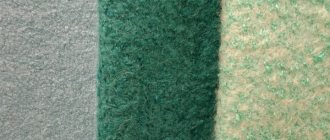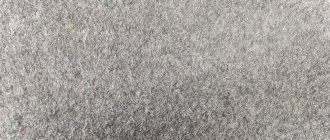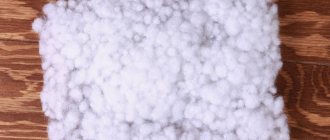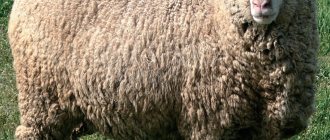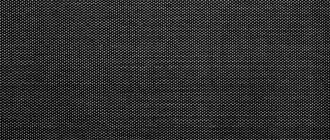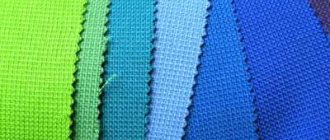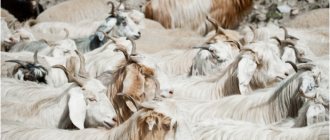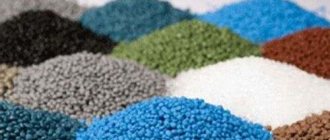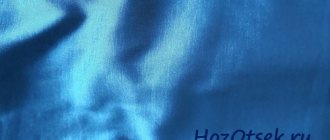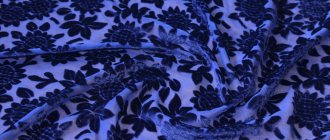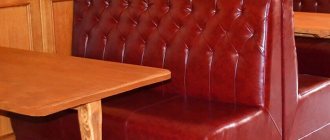Home / Fillers
Back
Published: 06/16/2021
Reading time: 3 min
0
11
From the once natural material that was collected during the molting period of noble birds, only the name remains. Artificial swan down has a synthetic nature, but at the same time excellent performance characteristics. They are used to fill blankets and pillows, jackets and coats, which are called down jackets.
- 1 Collection and properties of natural swan fluff
- 2 Production and characteristics of artificial down 2.1 Advantages and disadvantages
- 2.2 Comparison with other fillers
Features and characteristics of artificial down
Due to the specific structure, hollow, airy structure of the main microfiber, the material has the following quality characteristics:
- first-class thermal insulation properties;
- resistance to deformation, preservation of the original shape;
- high levels of physical characteristics - structural homogeneity, softness, lightness, elasticity, airiness, plasticity;
- biostability - it is not penetrated by: harmful insects (dust mites, bedbugs, moths), pathogenic microflora (fungi, mold), unpleasant, specific odors;
- low maintenance requirements.
Excellent performance properties - dirt-repellent properties, no shrinkage, stretching, or clumping when washed or worn.
Composition: what is the filler made of?
Depending on the type of synthetic down, the materials for its production can be: polyester microfibers impregnated with silicone, membrane fiber with hollow fibers, siliconized polyester, polyester. During the manufacturing process, many synthetic, ultra-fine strands of fiber are combined to create a springy, seamless web of material. Read about mattresses for garden swings here.
What properties does it have?
Main properties of synthetic insulation:
- lightness at the same time with excellent thermal insulation;
- homogeneity, porosity of the structure;
- comfortable air circulation for the human body;
- softness;
- low hygroscopicity, hydrophobicity, moisture resistance;
- elasticity;
- wear resistance;
- easy restoration of shape, no caking;
- absence of extraneous sounds during operation;
- no migration from under the outer covering material.
Advantages and disadvantages
Positive qualities of padding material made from synthetic fluff:
- Heat retention at very low temperatures, high wind speeds.
- Durability, wear resistance. The duration of wearing outerwear is 5-6 years, the service life of pillows, blankets, bedspreads, etc. is more than 10-15 years.
- No shrinkage, stretching when worn or washed.
- The ability to maintain the original shape, thickness, volumes throughout the entire period of operation.
- Not allergenic.
- Water resistance.
- Air permeability, constant air exchange.
- Absorbing odors.
- Full environmental compatibility with the human body.
- Wide scope of application.
The advantages include ergonomic operation, low maintenance requirements, and storage conditions.
The disadvantages of the filler include:
- easy electrification, tendency to accumulate static electricity;
- lack of ability to absorb moisture;
- the possibility of causing overheating of the human body when staying in a warm room for a long time, wearing clothes with such insulation;
- rapid destruction of the fiber structure of the material, reducing its heat-protective properties with very frequent washing.
Production: how to get it
The technology for forming the fiber of the padding material depends on: the type of artificial down obtained, the thickness/length of its pile, and linear density. Main stages of the production process:
- production of the finest fibrous threads;
- processing them with silicone emulsion (siliconization);
- carding of fibers - to obtain a single-layer/multi-layer fabric in the form of spirals;
- twisting fibers, twisting into curls - to make fluff in the form of balls;
- formation of fluffy fabric;
- thermal welding (bonding) – furnace heating of raw materials for weaving and fusing fibers.
Innovative developments
Synthetic fillers are developed by many companies, each of which produces its own material. Almost every leading manufacturer of sleeping bags has its own innovative developments. Thus, the Deuter company puts a lot of time, effort and resources, trying to bring them as close as possible to the properties of natural down, or even surpass it.
For example, the branded Thermo Pro Loft® insulation, which is used in the Deuter Exosphere line of sleeping bags. It consists of a mixture of hollow and dense synthetic fibers with a silicone coating to achieve an optimal balance of warmth/weight, compressibility and durability. The technological process of its production consists of special heat treatment of polyester fibers, transforming the finest threads into an excellent high-tech heat-insulating fabric. This soft, lightweight and warm insulation resists getting wet well, absorbs moisture very little and dries quickly.
That's why Deuter guarantees that, with Thermo ProLoft® filling, the sleeping bag will maintain its temperature characteristics no matter what your sleeping position is.
athlete price
Sleeping bag Deuter 2021 exosphere 0 sl left graphite/mango
14 590
athlete price
Sleeping bag Deuter 2021 exosphere -6 sl left maron/mango
17 290
athlete price
Sleeping bag Deuter exosphere -6 right cranberry/fire
17 790
athlete price
Sleeping bag Deuter 2021 exosphere 0 left black/fire
14 990
Another innovative development from Deuter is the synthetic Polydown Soft Polyester Fiber filler in Dreamlite sleeping bags, which are a budget alternative to lightweight down sleeping bags. Suitable for hiking and traveling in warm climates or in hot weather, for multi-races and cycle touring, as well as for overnight stays in huts or shelters. The Dreamlite sleeping bag compresses well and fits even into small backpacks.
athlete price
Express delivery
Sleeping bag Deuter 2021 dreamlite left navy/cranberry
7 090
Buy
athlete price
Express delivery
Sleeping bag Deuter 2021 dreamlite l left navy/cranberry
7 790
Buy
is the official distributor of Deuter products in Russia. We know it like no one else in our country and guarantee its quality.
If you have any questions about the quality assurance of any goods sold at Kant, you can find the answers here.
Varieties
The modern artificial insulation market offers a wide range of padded synthetic down. The classes and types of such materials differ from each other:
- Production method.
- The structure of the main fiber.
- Wear resistance coefficient.
- Some quality characteristics.
Thinsulate
Thinsulate is the lightest, thinnest, most elastic type of artificial down. It was originally developed to insulate the clothing of astronauts and polar explorers. To obtain insulation, they use the finest, with a high content of silicone impregnation, twisted, intertwined at different angles, spiral-shaped polyester fibers. Read about the description of corduroy furniture fabric here.
Special characteristics of the filler:
- does not shrink, does not deform;
- There are 15 modifications, subclasses;
- fire resistant;
- does not absorb moisture at all and does not get wet.
Thinsulate thread thickness is 70 times thinner than human hair, the material is 2 times warmer than natural fluff.
This type of filler is indispensable when sewing:
- special tourist and military uniforms;
- fishing, hunting, ski suits;
- shoes
Comforel
Artificial filler Comforel is a non-woven material made from hollow polyester fiber using special heat treatment and water-repellent impregnation. Its characteristics and properties:
- fluffy fiber has a structure in the form of twisted, interlocking small balls (Ø 5 mm);
- antibacterial impregnation that prevents the appearance of dust mites, mold, and mildew in the fiber;
- hypoallergenic;
- not electrified.
It is able to hold products well and restore shape after compression and washing.
Holofiber
Holofiber and thermofiber are fibrous insulation made from silicone-coated polyester or polyester. Its structure consists of hollow, intertwined spiral fibers, with air layers (cavities) between them. Read about Ivanovo knitwear Russia at this link.
Depending on the operational characteristics and its purpose, Holofiber comes in the following types:
- Volumetric is a voluminous fiber for giving shape.
- Puffs – filler in the form of balls.
- Soft, tech - with a special coating on the upper/lower parts that keeps fibers from migrating in the fabric.
- The medium is especially gentle and soft.
- Hard – thick, dense, retains its shape well.
Synthetic
Synthetic down is insulation made from polyester threads impregnated with silicone. How to choose a mattress protector for a mattress, read this article.
The fiber was developed taking into account the characteristics of the human skin structure, provides high thermal insulation, is safe, completely environmentally friendly, and does not cause allergies.
Unlike fibertek insulation, synthetic down has a number of disadvantages:
- poor air circulation in the fibrous structure;
- holds its shape worse under load.
Under the influence of washing and sweat, after 3-4 years it begins to lose the quality of thermal insulation;
Biofluff
This material was created in the 70s of the 20th century by Dupont. In its structure it is fluffy, soft, elastic, spherical in shape. If you squeeze it, it returns to its original position, i.e. quickly restores its shape. At the same time, the thermal insulation values of bio-down are 1.3 times higher than those of natural down.
Advantages
The advantages of this type of filling for down jackets include the following:
- retains heat well
- does not pill after washing
- does not cause allergies
- does not begin to “climb” out of the fabric of the product
- long service life
Among the disadvantages of bio-fluff, it can be noted that it accumulates static electricity and is destroyed when exposed to high temperatures. Therefore, a jacket with such filling cannot be kept near heating devices, much less dried on a radiator or ironed. Also, this insulation does not remove moisture from the body well, so it is recommended to wear hygroscopic fabrics under the jacket.
Temperature
How warm is a biodown jacket? It is worth noting that a down jacket with biodown insulation is designed for temperatures from 0 C to minus 35 C - this depends on the density of the insulation padding. The higher it is, the warmer the product. A thin product with bio-down is suitable for autumn, but a denser and more voluminous product is suitable for winter.
In modern models, as a rule, the filling density is 520 cubic inches per ounce for a demi-season model, but for a winter item the filling density will be approximately 160 g/sq.m.
If you don’t know the density parameters of the insulation, then you can rely on your own feelings:
- first, pay attention to the density of the product by simply touching it. If it is thin or medium, then this is most likely a demi-season option. If the product is dense to the touch, and the quilted squares or stripes on the down jacket are voluminous, then it is most likely designed for winter;
- secondly, if even when you try it on you feel that the thing is noticeably warming you up, although you literally just put it on and only a minute or two has passed, it means that the thing is designed more for winter than for autumn.
As a rule, clothes filled with synthetic bio-down are very warm, and this can be felt literally from the very first minutes of trying them on. If you do not feel that the jacket warms you, then you need to look for a model with a denser layer of this insulation.
Care
Conditions for caring for a down jacket filled with bio-down:
- delicate wash at water temperature no more than 30 C
- Dry cleaning allowed
- do not keep it near fire or heating devices, ironing is prohibited
Otherwise, bio-down is a very practical material, and its price is quite reasonable. With proper care, a jacket with this insulation will warm you even in the coldest winter and will last a long time without losing its positive properties.
Scope of application: what to sew
The qualitative characteristics of artificial down material allow it to be used for stuffing and insulation:
- outer demi-season, winter clothing for adults, children;
- things, hats for tourism, hunting, fishing, sports;
- clothing for special purposes (suits for firefighters, submariners, etc.);
- shoes;
- upholstered furniture, individual elements of its decor;
- items, accessories for sleeping, relaxation (mattresses, sleeping bags, blankets, pillows);
- elements, home decoration items;
- soft toys, children's goods;
- things of your own, homemade handicrafts.
Winter clothes
Winter outerwear and hats insulated with artificial down are the best choice for the capricious, wet, frosty winter season.
Due to the presence of air in the cavities between the fibers of the main threads of the material, even a thin layer of such filler in a down jacket provides:
- good thermal protection at very low air temperatures (up to -35°C);
- protection from moisture and precipitation;
- freedom of movement, comfortable wearing.
Manufacturers of warm clothing use synthetic down not only to fill the internal space of products, but also for their external, decorative edging. Eskar will tell you about Roman roller blinds in this material.
Reviews
Reviews about the filler are mostly positive. Users like its high heat-protective properties that it heats even at ─40°C. Swan down is lighter than holofiber, but warmer than padding polyester. Low temperature washing allows items to regain their original properties. I especially like the price of artificial down and its safety for allergy sufferers.
Maya Nikolaevna, 45 years old
“I wanted to change the old pillows from Soviet times. I came to the store, and the seller said a bunch of names, which confused me even more. I understand that there are now a lot of fillers and it’s not easy for an amateur to understand them. So I took a time out to calmly study and weigh everything. I read what people write. I need the pillow to be machine washable, breathable and soft. I was choosing between bamboo filling and “swan down”. I gave preference to the second option. We plan to buy several more bedding items, including a blanket.”
Anna, 22 years old
“We had been preparing for a long time for a hike in snow-covered Karelia. I wanted to do everything with my feet, while staying warm and looking decent. For me, a southerner, this question was especially relevant. I needed winter clothes, preferably a jacket with good insulation. I was impressed by the reviews about the blanket with swan's down filling. I chose this option. As a result, the elongated jacket passed all the tests. It was warm, even too warm. At times it was so warm that you had to unfasten a couple of buttons. Now I’m thinking about purchasing a shorter version, but with the same insulation.”
Recommendations for product care
Basic principles for caring for products filled with artificial down:
- ventilate outdoors several times a year;
- shake and fluff pillows and blankets daily;
- ironing as necessary, with iron t +100°C;
- wash when dirty;
- You can store folded in a closet, on a hanger, or in vacuum bags.
Before you start washing or cleaning a product with synthetic down inside, pay attention to the type of material from which its upper part is made. It often happens that the covering fabric requires a more delicate approach than the filling.
How to wash
To remove all dirt, each item containing down is washed separately from other items. Particularly dirty areas (collar, cuffs, hem, sleeves) should be pre-treated with a suitable cleaning agent. You can wash it by hand or use machine wash.
Required washing machine mode: delicate, with water t 40-60°C.
Suitable detergent for washing: liquid or gel (rinses well, prevents clumping), without bleaches or chlorine-containing substances.
After washing:
- You can spin it manually or using a washing machine centrifuge;
- the thing must be shaken;
- dry in a vertical or horizontal position, well straightened.
How to wash synthetic fluff
One of the important advantages of this is the relatively simple care that anyone can handle at home. Many buyers of winter clothes are interested in whether it is possible to wash products made from synthetic down in a machine, and how to do this so as not to deform or damage the product itself. The answer to this question is yes: yes, you can, it is absolutely safe for the jacket, unless, of course, you do it too often. The filler will not deteriorate either after hand washing or after being in an automatic washing machine. It is only important to take care of the washing regime. If you use a machine, we recommend setting the delicate mode and the water temperature to about 40-60°C degrees. Theoretically, the fiber can withstand high temperatures, but still you should not expose it to such influence so that it lasts as long as possible and retains all its original qualities.
Most often, synthetic down is used to make demi-season clothing; it is also often used to fill winter jackets and down jackets. All of these products are usually quite bulky, so you need to wash each one separately to completely get rid of all the dirt.
Before cleaning the products, check that the outer fabric and lining are intact. There may be some minor tears and damage. If you find small defects, do not set the temperature above 30–40 degrees so as not to increase the area of damage. We recommend squeezing only at low speeds to preserve the shape and texture of the filler.
Before loading your clothes into the drum, it may be a good idea to apply detergent to areas that are particularly prone to staining. These are the hem, sleeves, cuffs and collar. This will make washing more efficient. It is also advisable to rinse the product by hand so that there are no white streaks or powder stains left on it after it is completely dry.
As you can see, this material has a huge number of advantages. Of course, if you wash too often, the thermal insulation performance decreases somewhat. But this is typical for any filler. In general, when considering synthetic down and answering the question of what it is, we say that it is a modern, environmentally friendly and practical material that is practically not inferior to natural material.
Alternative
An alternative to natural down is not only its synthetic prototype, but also bamboo padding made from natural raw materials, non-toxic eco-fiber, bio-down created using innovative technologies, and artificial swan down - nanometer.
Which is better: natural or artificial down?
Today, a product made from 100% natural down and waterfowl feathers is quite rare and very expensive. But is it worth spending money on a down jacket with expensive padding if a synthetic analogue with similar characteristics (thermal insulation, lightness, softness) does not have such negative properties of natural down as:
- the need to comply with special care rules;
- pressing after improper washing, exposure to moisture;
- sensitivity to foreign odors;
- frequent susceptibility to attacks by moths and insect-eaters;
- possibility of allergic reactions.
Artificial swan down or bamboo fiber
Bamboo fiber, like synthetic swan down, is used as padding material for pillows, blankets, and mattresses.
Similar quality characteristics of these two types of packing:
- durability;
- hydrophobicity;
- environmental safety for the body.
Properties that distinguish bamboo filling from synthetic down:
- The raw material for the fiber is not synthetic materials, but cellulose from natural bamboo.
- The best indicators of air conductivity and ventilation.
- Natural antibacterial properties. The global expert company SGS recognized that 60% of pathogens placed on bamboo fiber die on it within 60 minutes.
- Thermoregulation, the ability to maintain a comfortable temperature of bedding - warm in winter, cool in summer.
What is the warmest clothing insulation?
Just 10 years ago, down jackets with a down content of 85% were considered the warmest clothing. They are able to protect from frost down to -40 degrees and are lightweight and do not restrict movement. However, thanks to innovative technologies, scientists were able to create synthetic insulation materials that are significantly superior to down and previously known insulation materials in all respects. They are warmer, lighter, more wear-resistant, do not get lost, and are undemanding in maintenance.
The warmest insulation materials are:
- Thinsulate;
- shelter;
- thermofin.
But a lot depends on the quantity and density of the material.
conclusions
- Artificial down is an ultra-thin, high-quality filler material for insulating clothing and household items, an excellent alternative to natural down.
- Outerwear and household items with synthetic down filling do not absorb unpleasant odors, do not accumulate dust or dust mites.
- After washing, exposure to moisture, products with synthetic down dry quickly, do not deform, and do not lose their shape.
- When washing and cleaning products with synthetic down filling, be sure to take into account the characteristics of the upper covering material.
A little about the subjective
As synthetic fill technologies continue to advance, it can be expected that they will close the gap in all areas where they are still inferior to down.
But we should not forget about the subjective moment. If you are a supporter of this or that insulation, then not a single article will dissuade you. Personally, I am one of those adherents of down who will prefer it in any conditions, even on long expeditions and hikes. After all, at the end of a long busy day full of physical activity, when after a hearty dinner you climb tired and well-fed into a sleeping bag, it is so pleasant to have this gentle enveloping feeling of soft warmth in a cozy down cocoon. Not even the most innovative synthetic filler will create such living warmth.
Down sleeping bags at Kant.
Synthetic sleeping bags at Kant.
All sleeping bags at Kant.
If you live in a city where there are no our stores, then this is not an obstacle to purchasing what you need. Simply, when making a purchase through our online store, please note that we have delivery by couriers and transport companies.
You can also use self-pickup if that's more convenient for you.
When purchasing online, we offer various payment systems:
- cash to courier
- Bank transaction
- on the map
- by installments
- using a gift certificate
All details on different forms of payment.
New items at Kant:
- Italian travel sandals Lizard
- Umbrellas for trekking. Comfortable and modern
- Complete Salewa 2021 collection
- 10 years of creation of the Cinquantaquattro model. Dolomite celebrates the anniversary of the bestseller
- Classic outdoor gear from Silva. The Complete Adventure Collection
- Classic outdoor shoes. Fresh Asolo collection – in “Kant”
- Quality and low weight of MSR equipment. Updated collection at Kant
- Tramp collection of tents and accessories. Made by tourists for tourists
- Warm and dry in any weather. New collection of Therm-a-Rest rugs in Kant
- Legendary brand Primus
Better without impurities
In addition to the beautiful design of a down jacket, it is also important to know whether it will keep you warm during a business trip to Yakutia and whether all the down will end up in the sleeve after washing. The most durable and warmest down jacket is considered to be made from goose, swan and eider down.
The label should say down. Feather is often added to fluff. The service life of the jacket is from 5 to 20 years. Duck down is the most short-lived: after 6-7 years it loses its properties. A less warm alternative to a down jacket is a jacket with a wool lining that says wool on the label.
You should not buy jackets with synthetic padding: after the first wash, it clumps into small clumps and the jacket becomes unusable.
Not so long ago they came up with a new material - synthetic fluff. It has the properties of down, does not cause allergic reactions and is cheaper.
Special pillows for pregnant women
Special pillows for pregnant women can be different in shape, most often their filling is synthetic material, in order to avoid allergies in pregnant women. For the same reason, it is better to choose a pillow for babies from polyurethane, latex or comforter. If you still decide to buy a product with natural filling for your baby, then it is better to buy products made from sheep or camel wool. It allows air to pass through well and the head will not sweat.
A special comfortable pillow for pregnant women can have different shapes.
